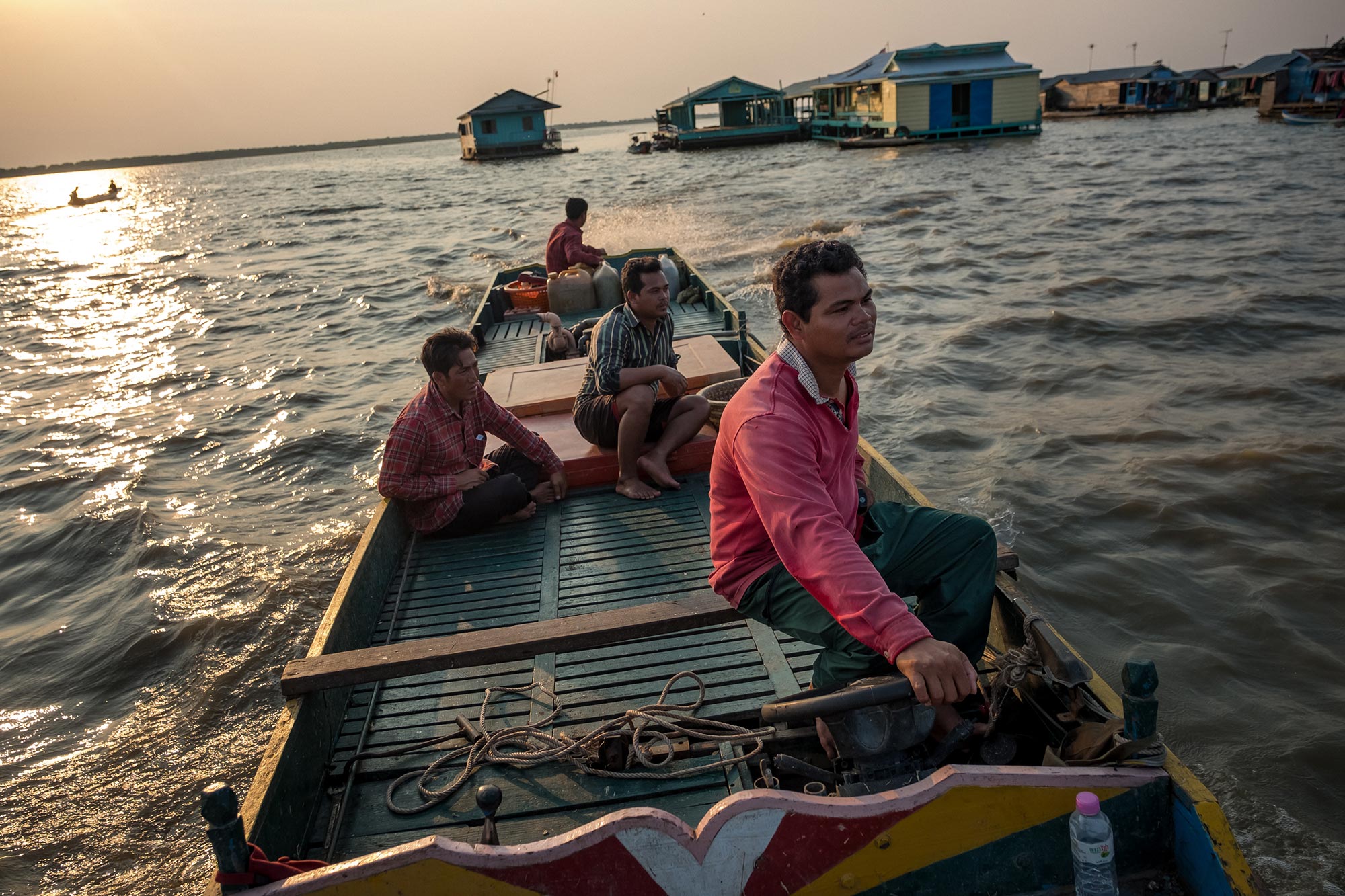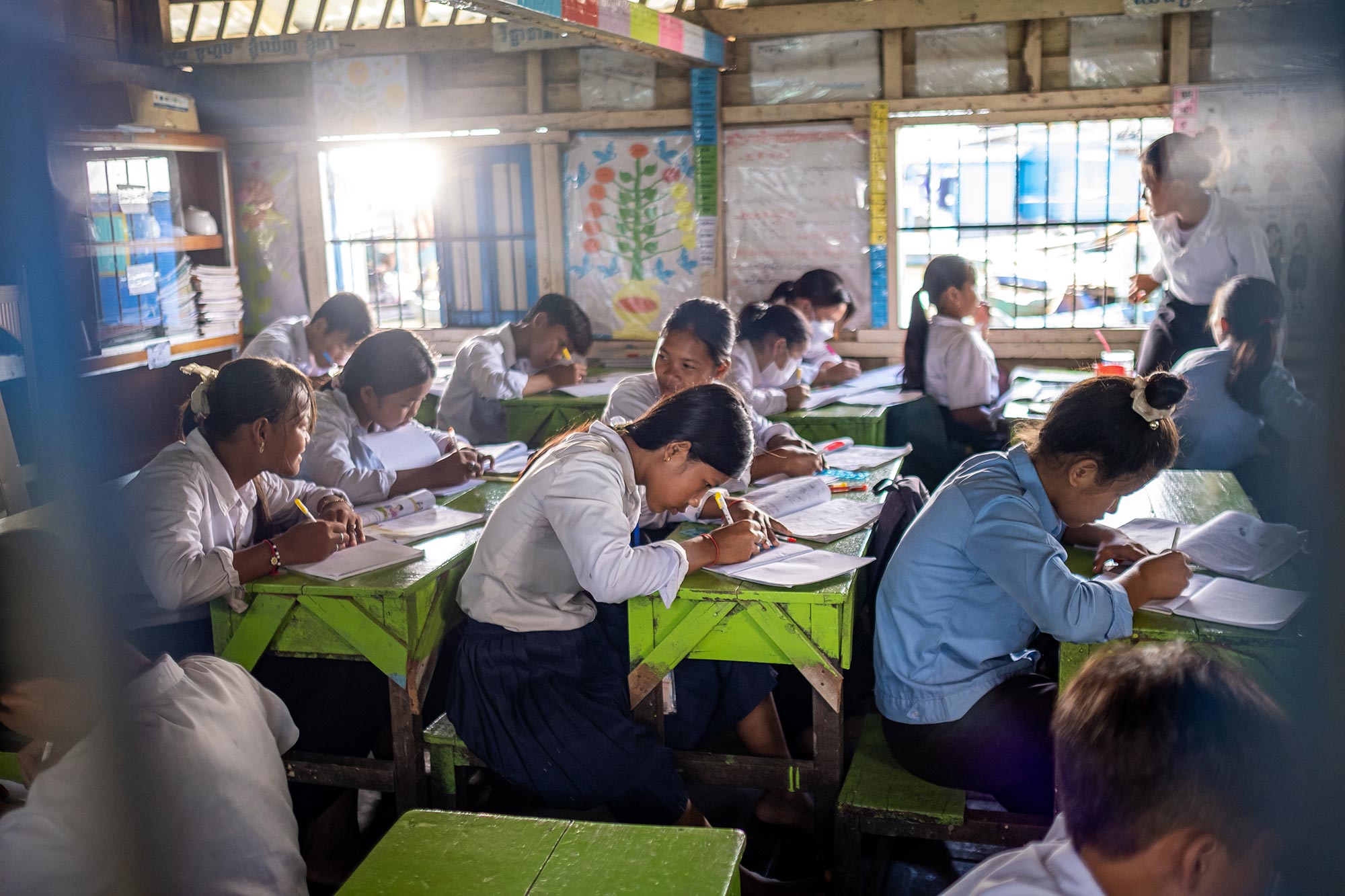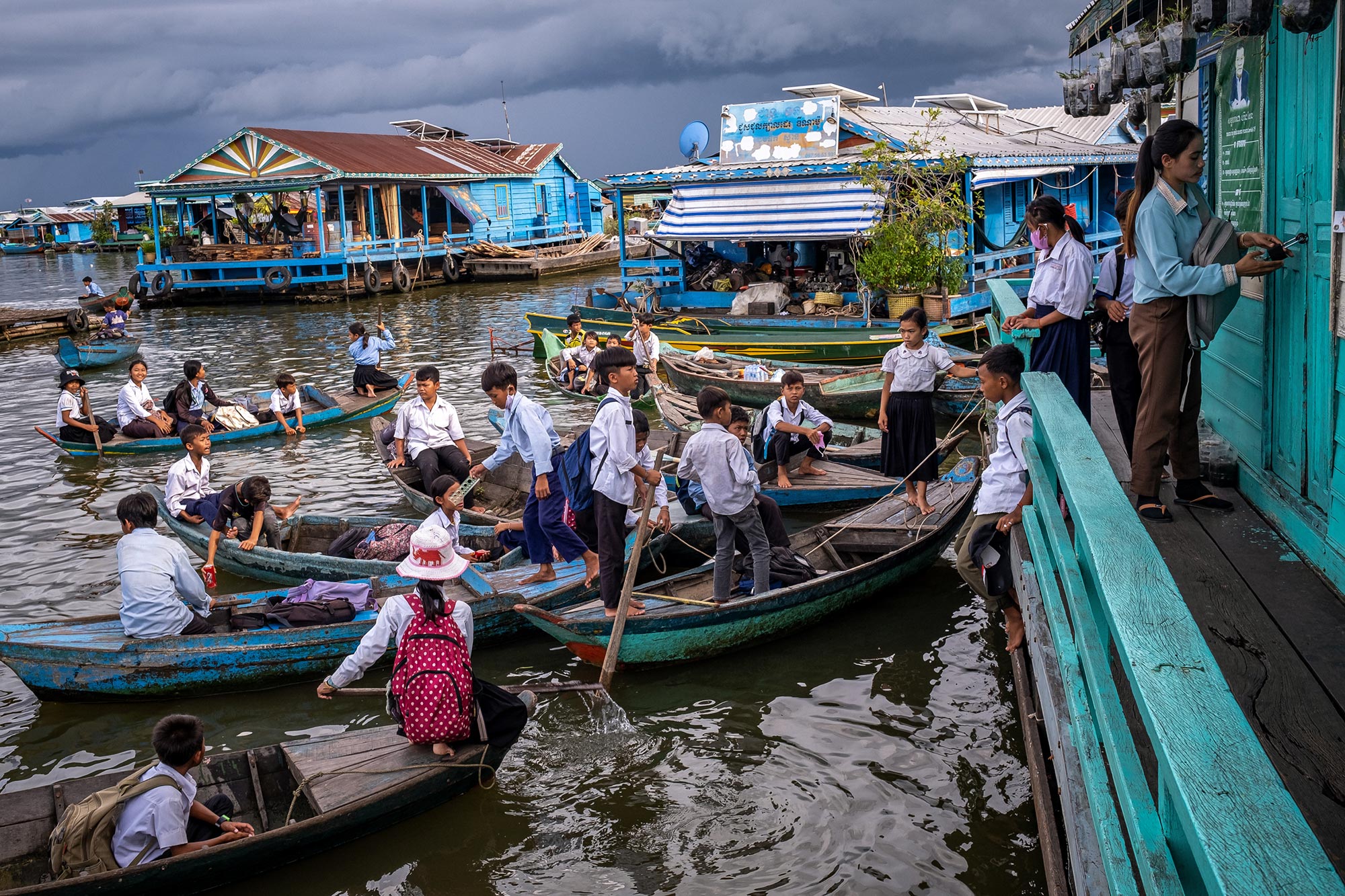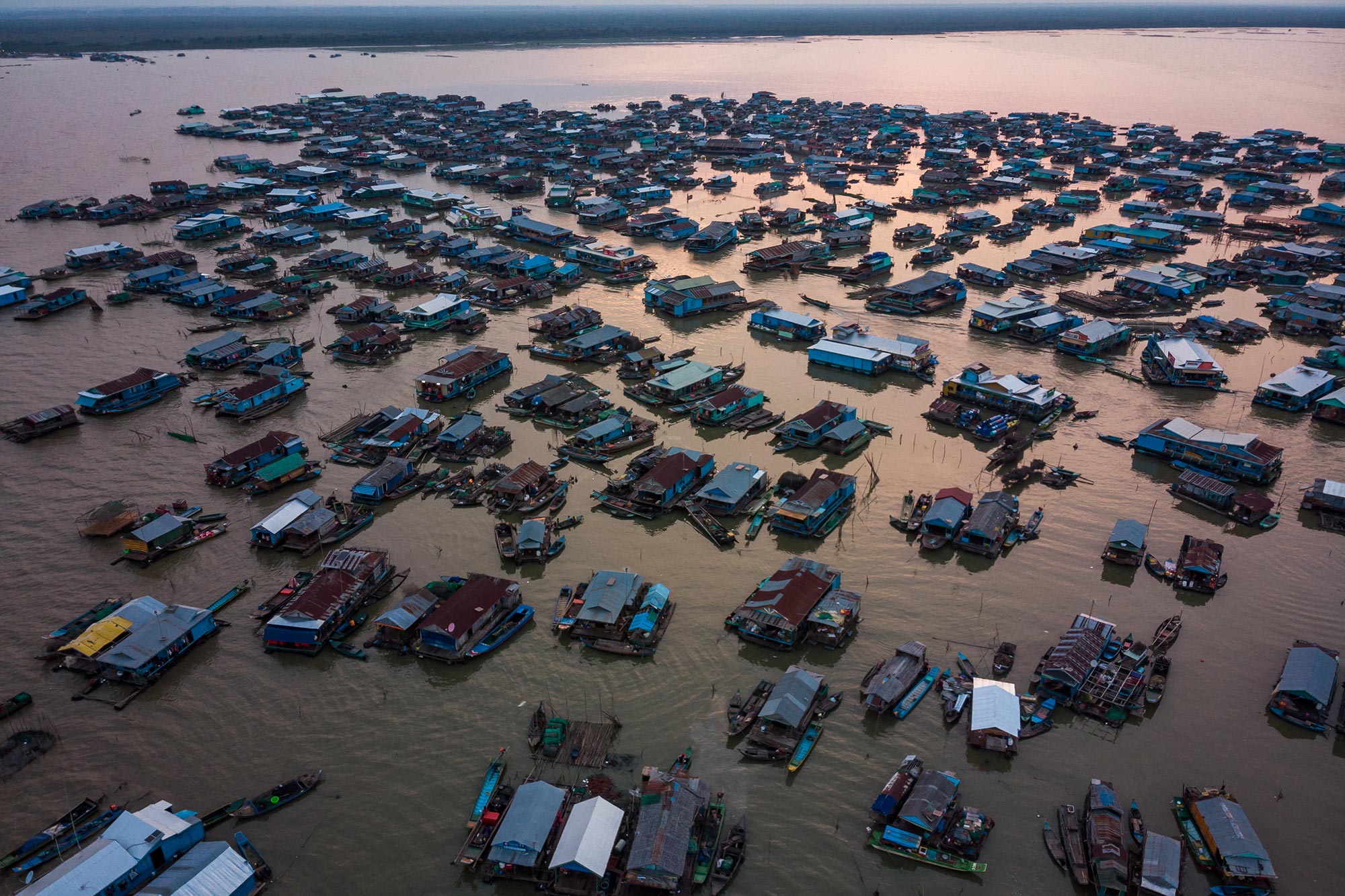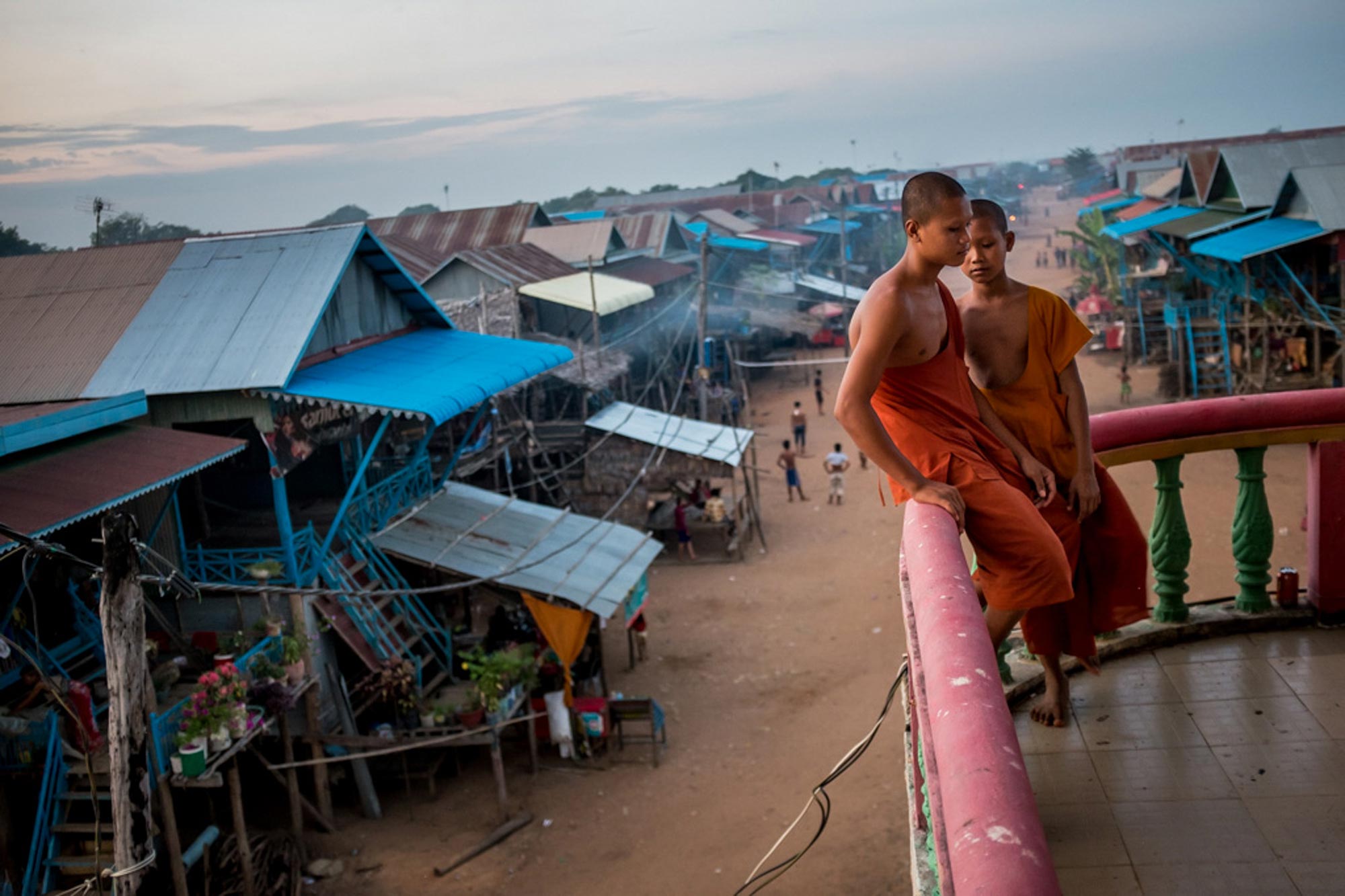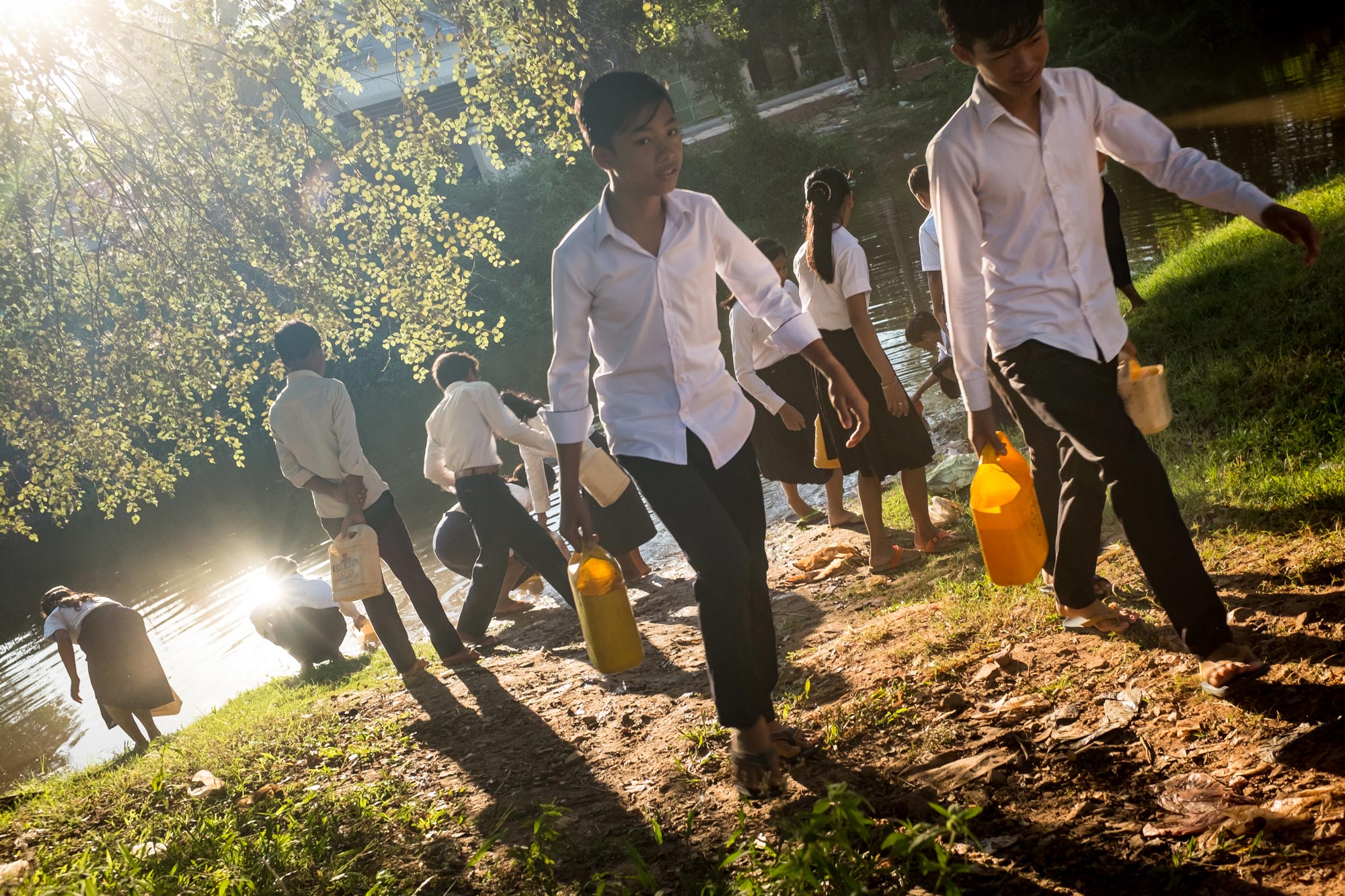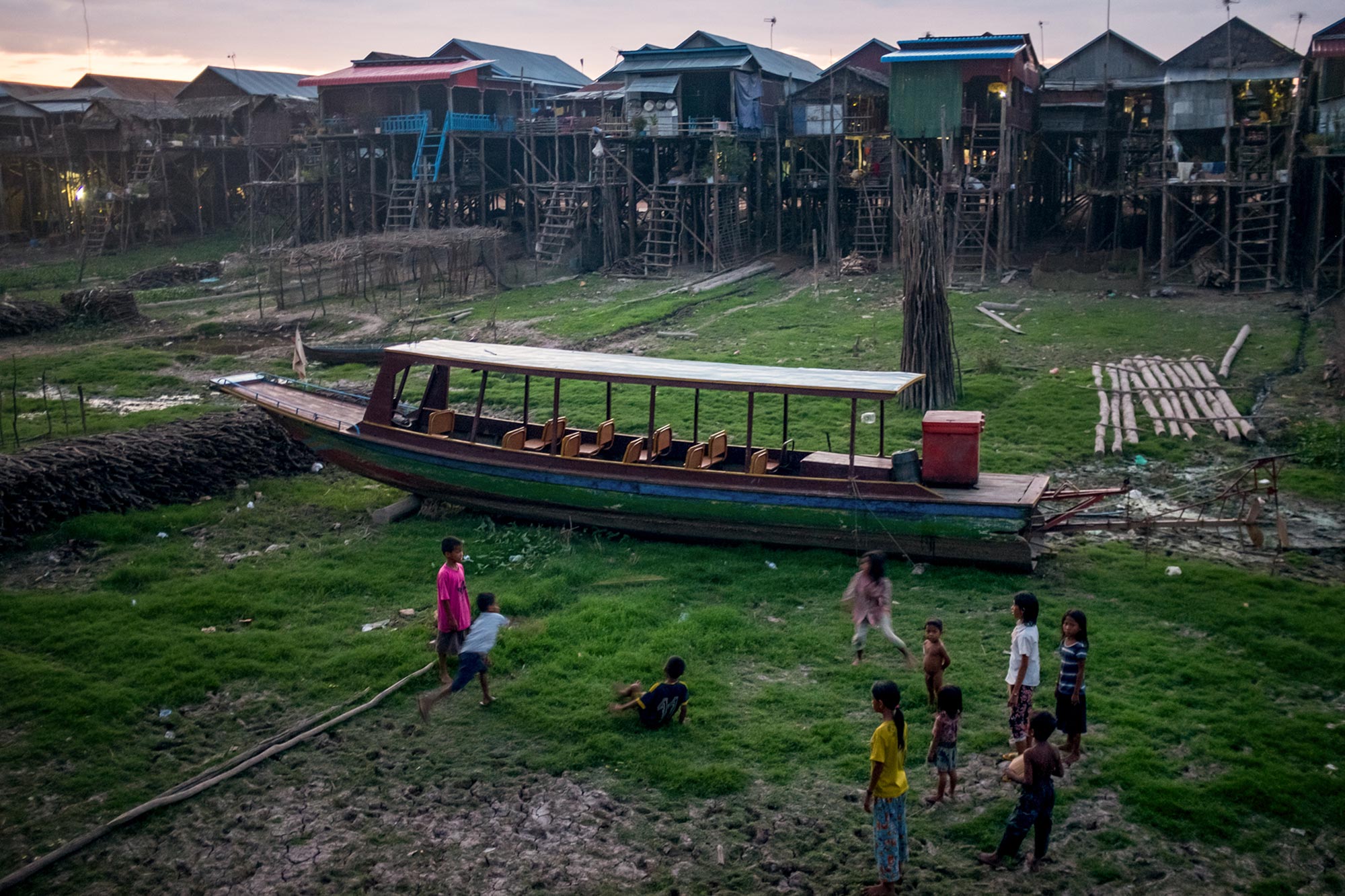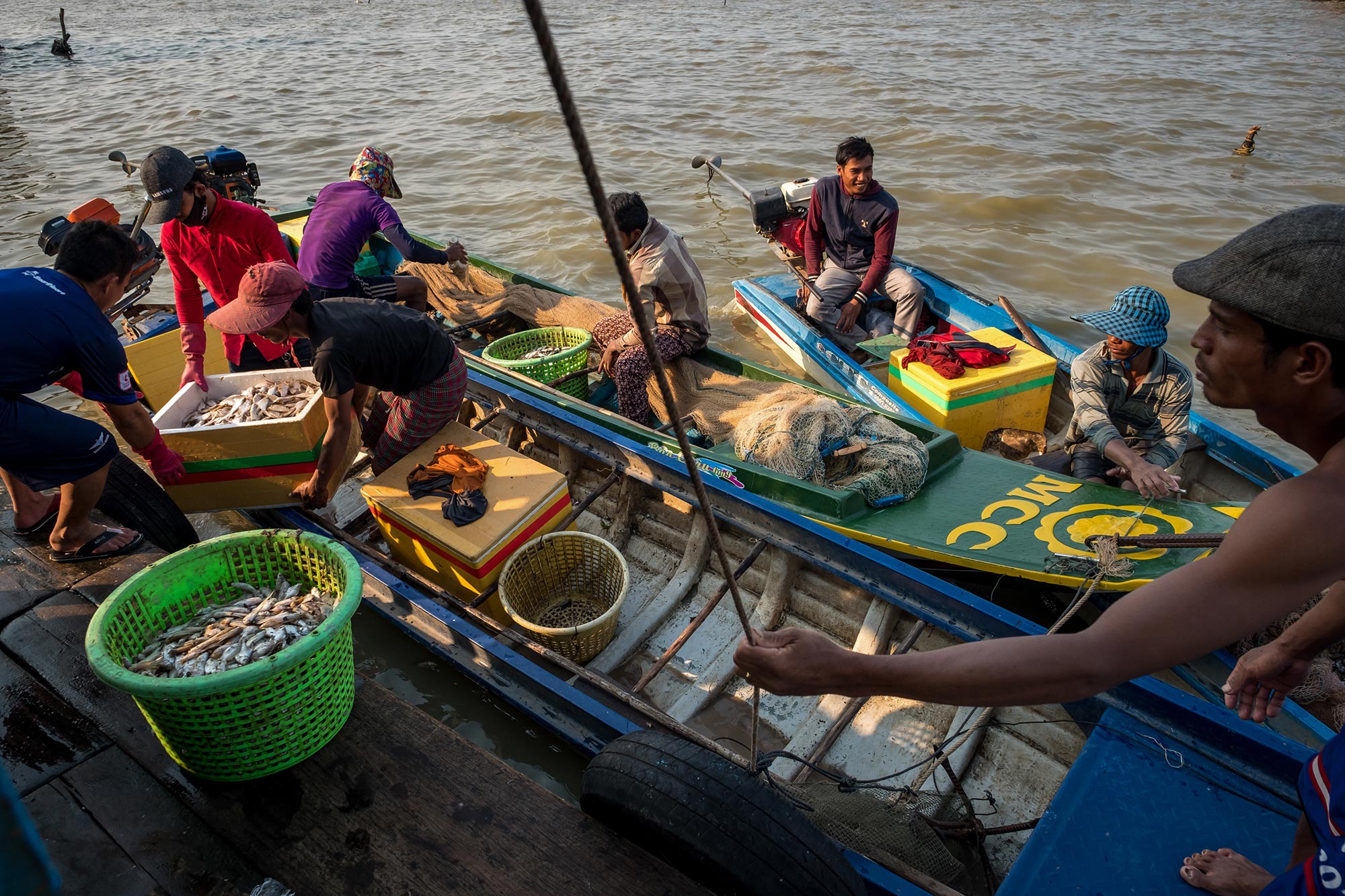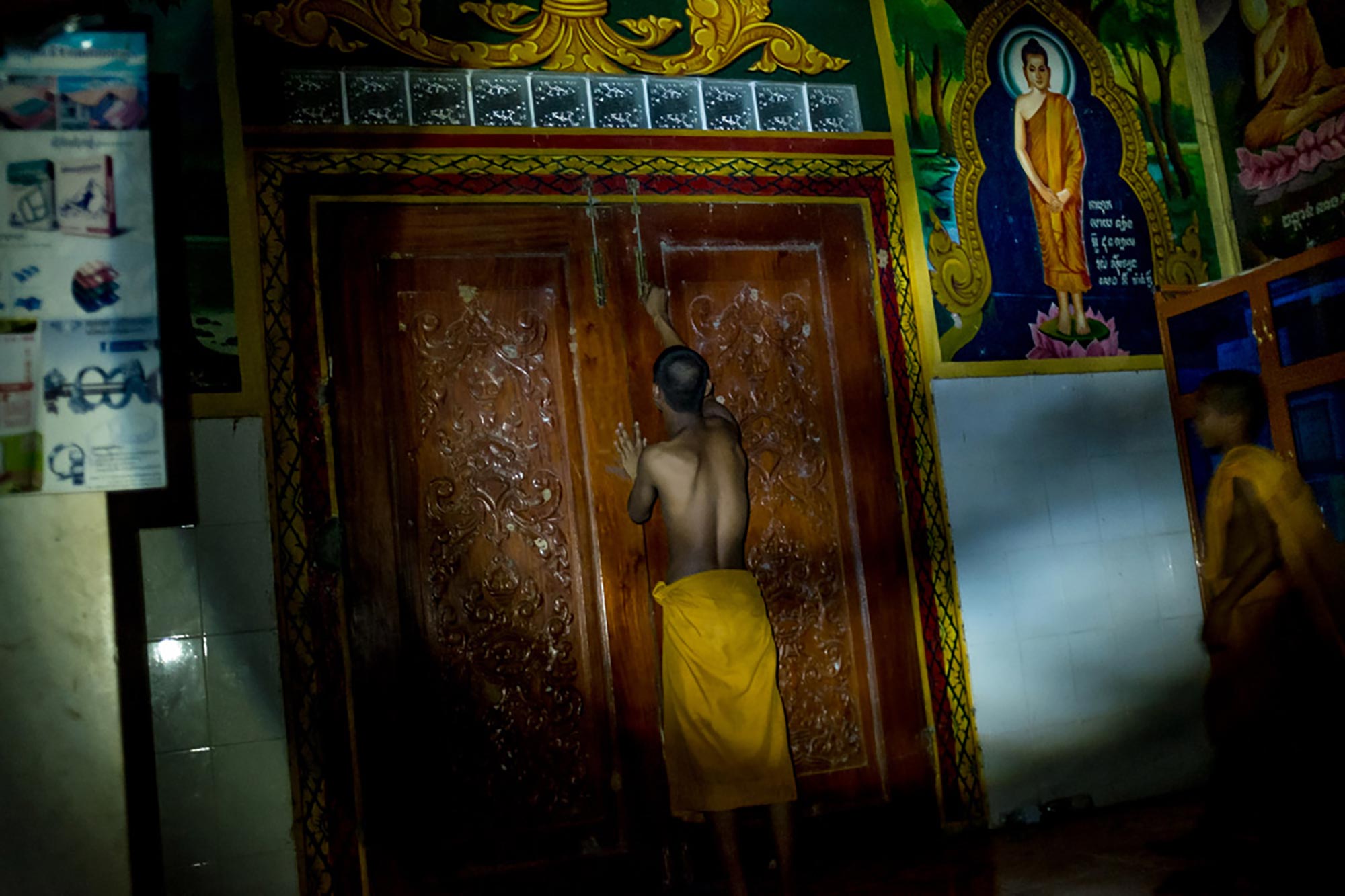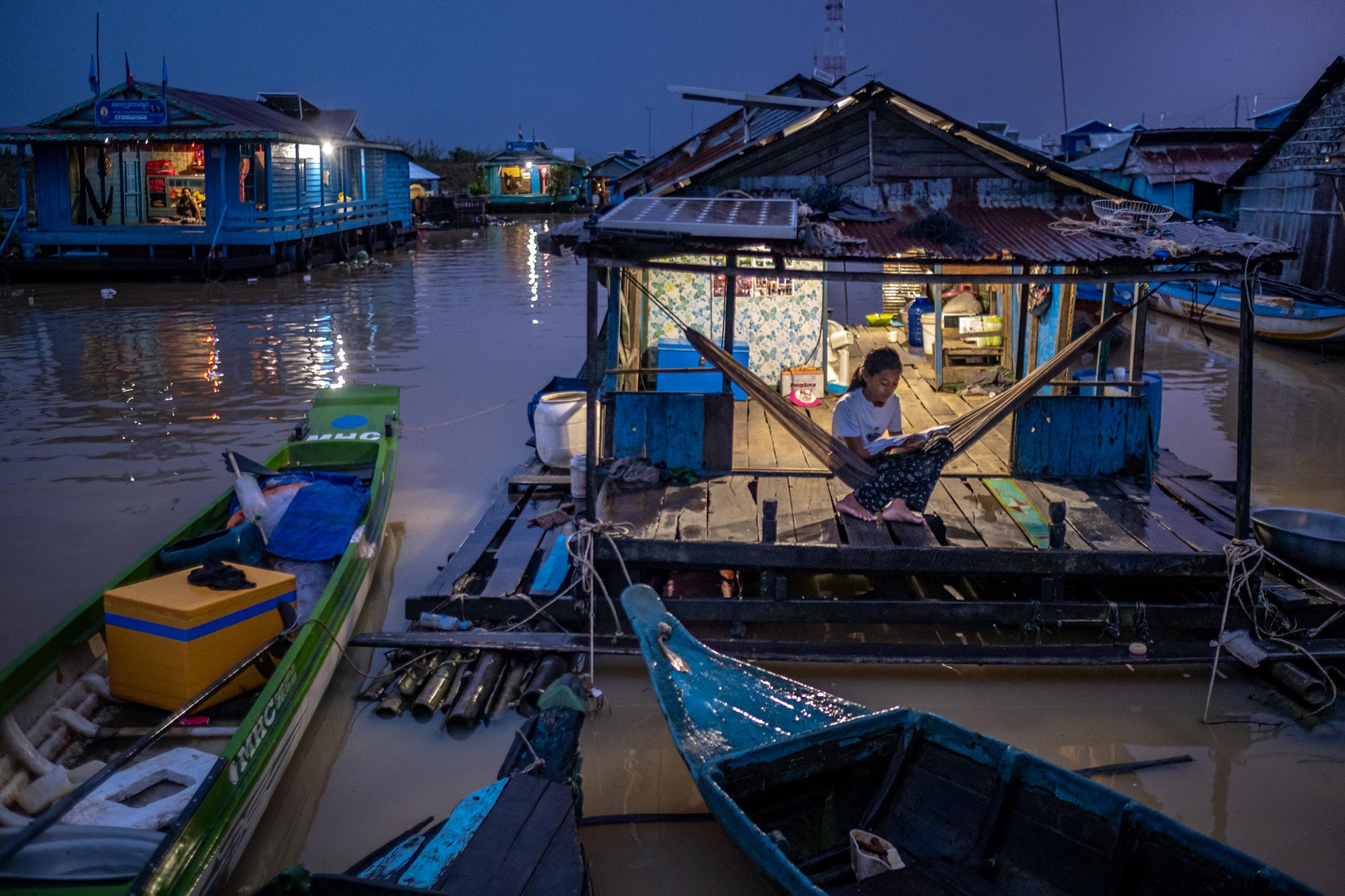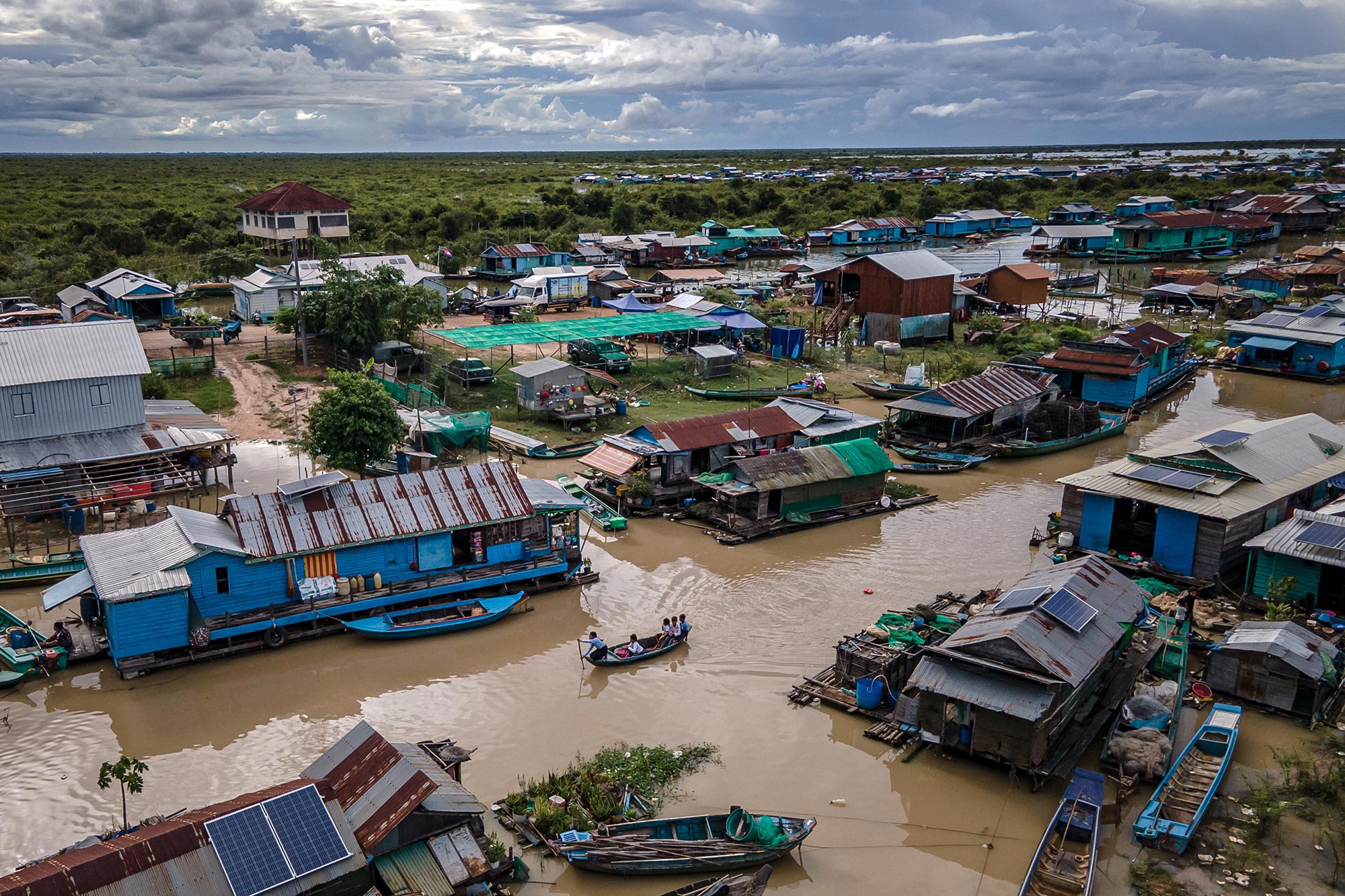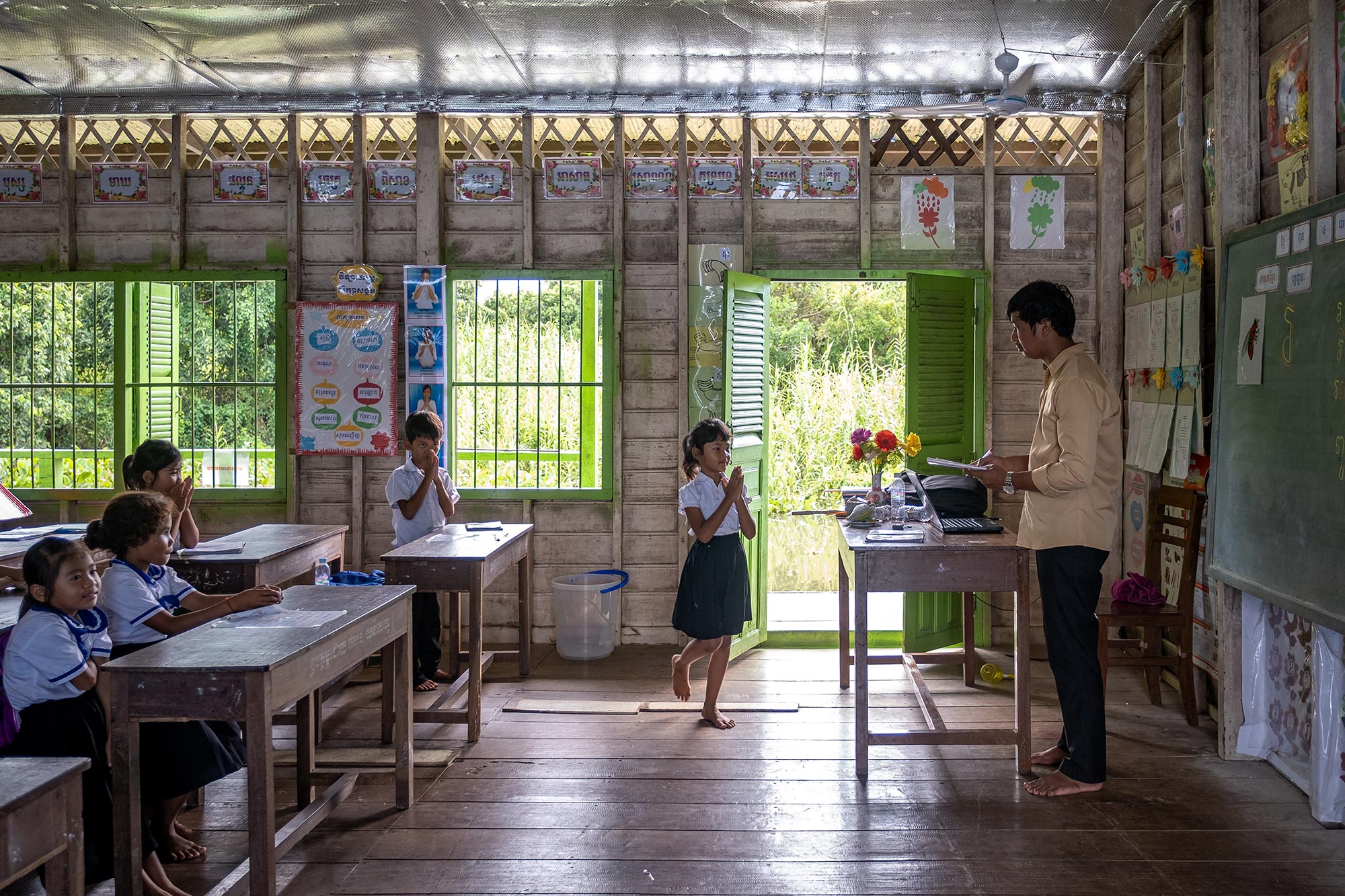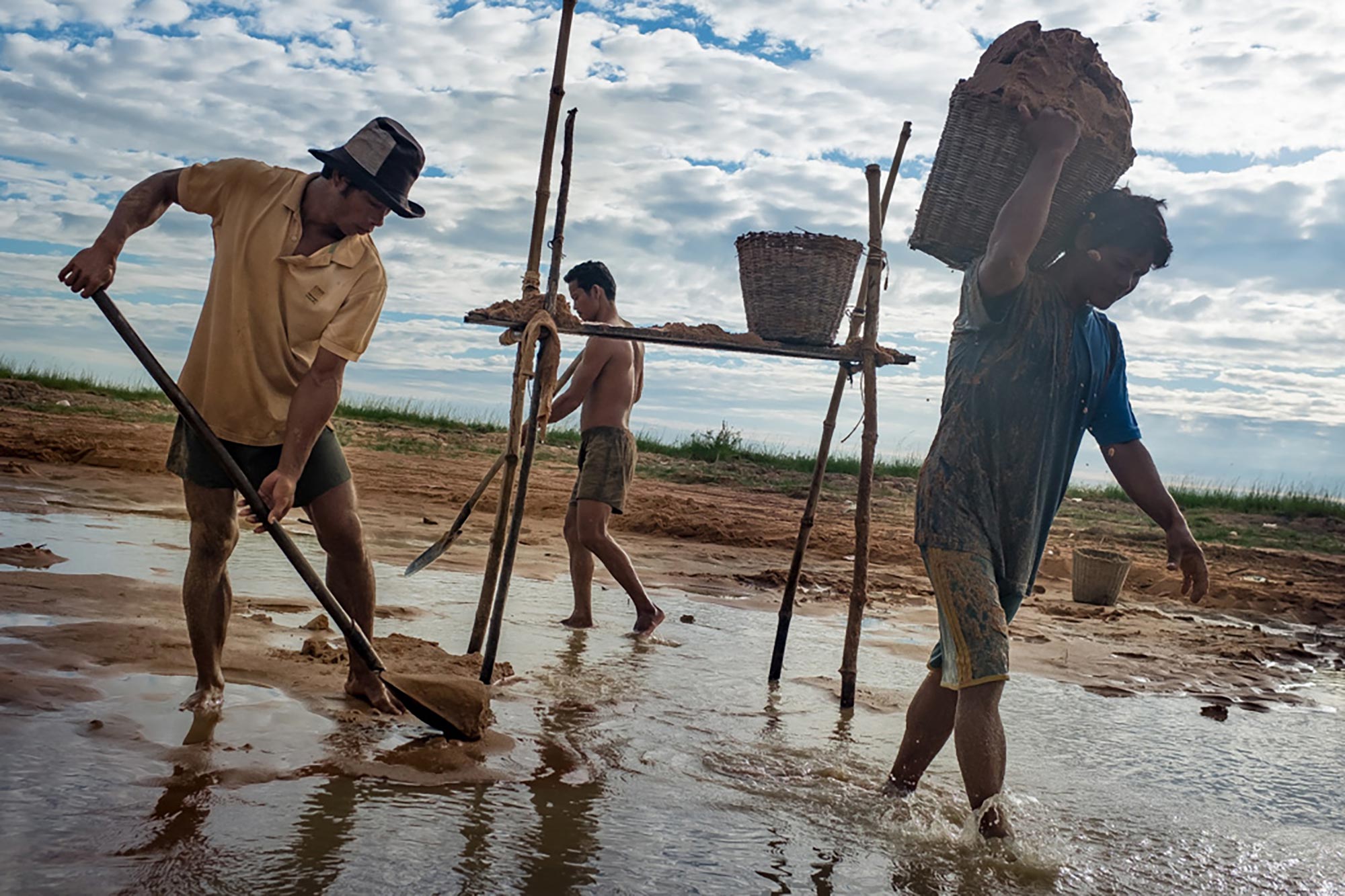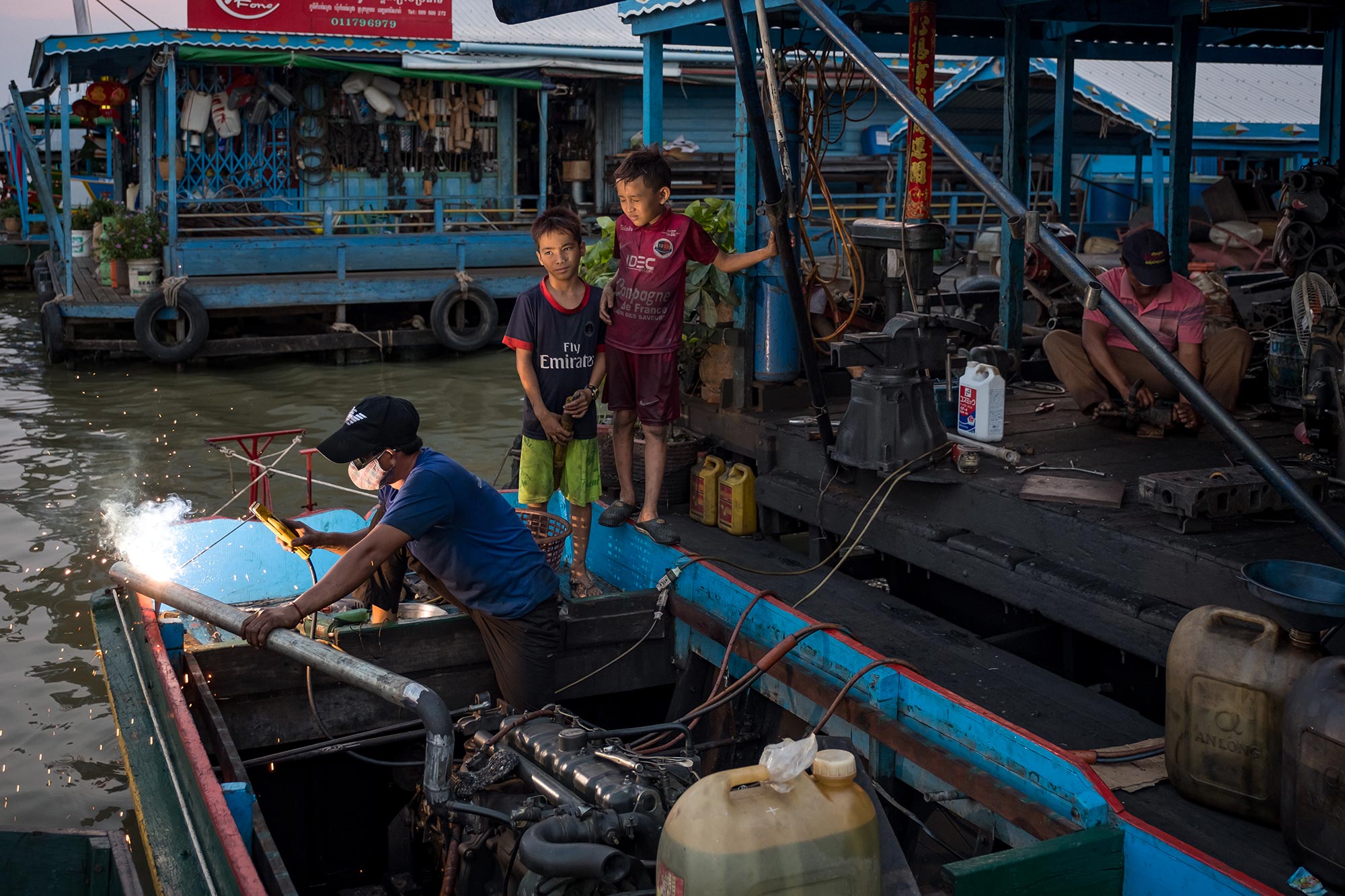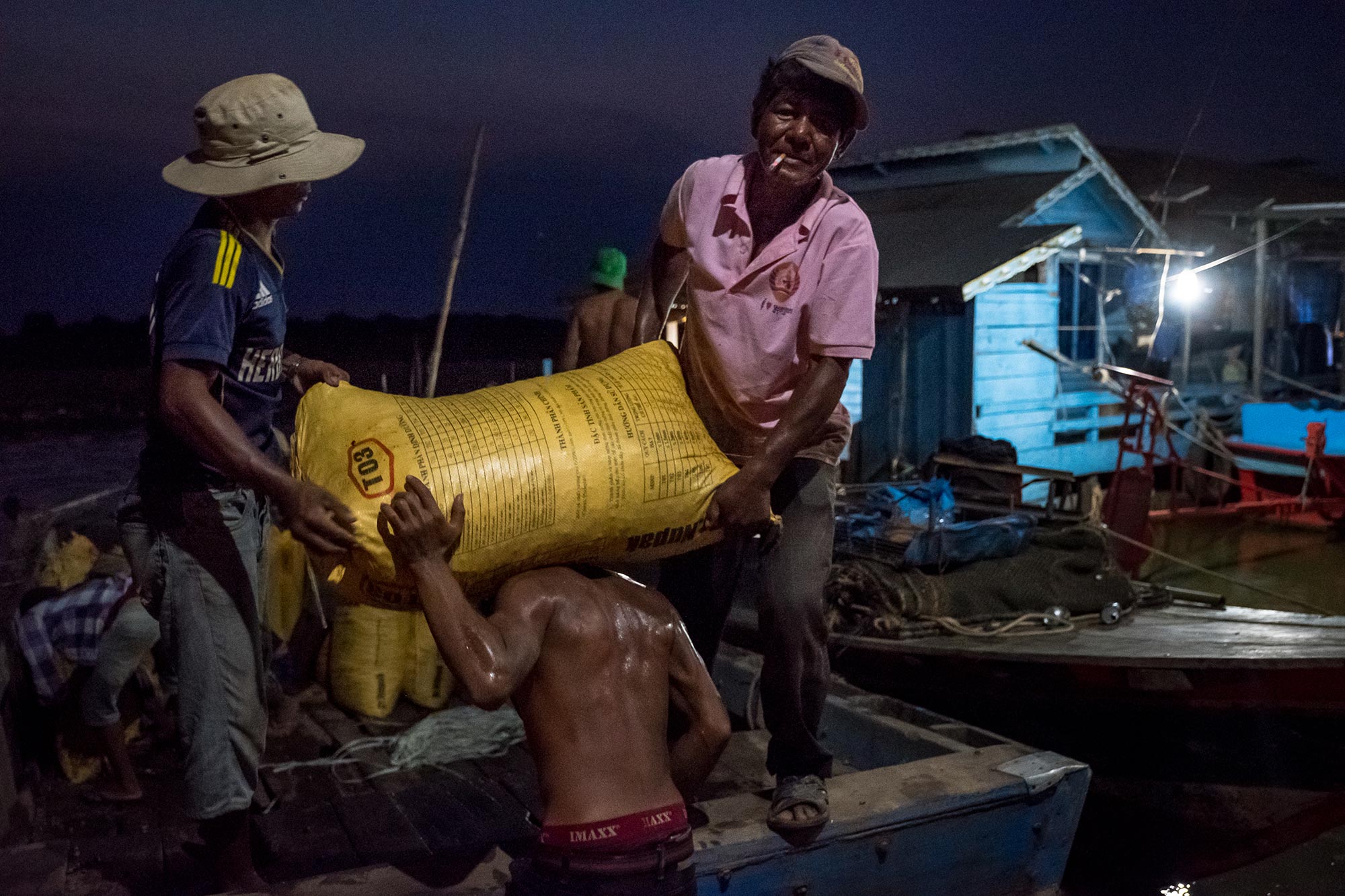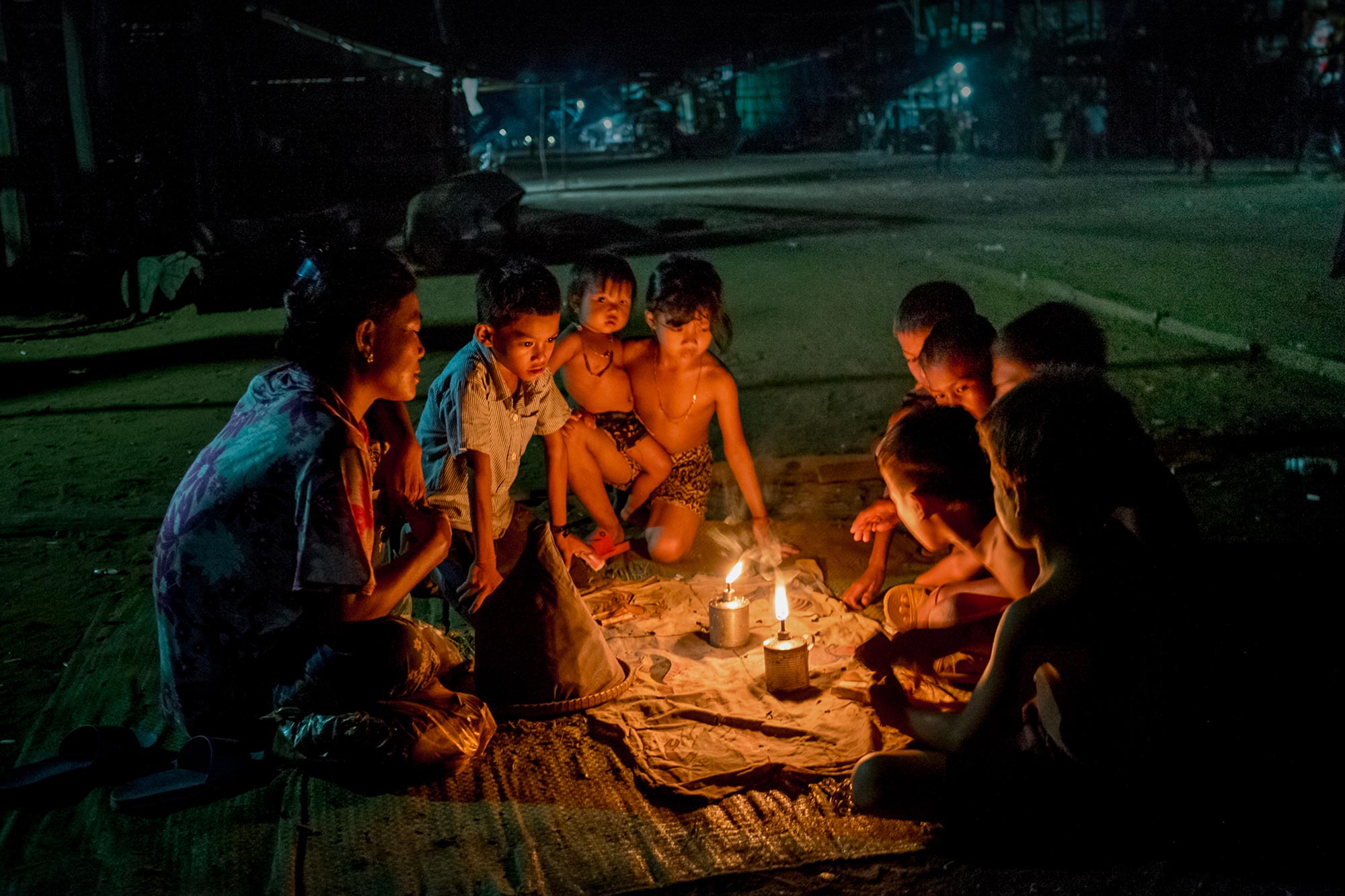Linh Pham
Photographer | info@linh-pham.com
Tucked along the Tonle Sap Lake, a tributary of the Mekong River, are floating villages that have sheltered Khmer, Chinese, and Vietnamese families for generations. Economic pressures, land-ownership disputes, and limited government support have pushed many to settle at the water’s edge, heavily relying on the lake’s resources for sustenance and trade.
Still, they persist. While traditional fishing remains central, some households diversify into aquaculture, net-weaving, carpentry, and boat-repair services. By blending time-honored methods with makeshift infrastructure, floating classrooms, open-air carpentry shops, and modest temples, they’ve devised unconventional ways to meet daily challenges.
Yet these local innovations cannot fully shield them from broader pressures. Alongside climate fluctuations and shifting water levels, government-led relocations, contested legal status for certain groups, and overfishing by commercial operators all threaten the delicate balance that sustains life on the lake. Although their adaptability is remarkable, the future of these floating communities remains uncertain, underscoring the need for policy reforms, legal recognition, and targeted investment to help them thrive.
On the Water’s Edge 2015 – 2023
